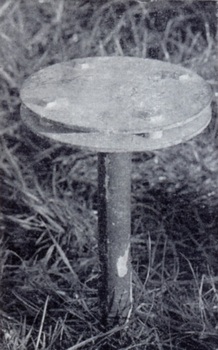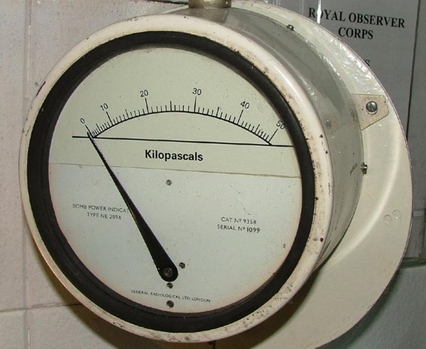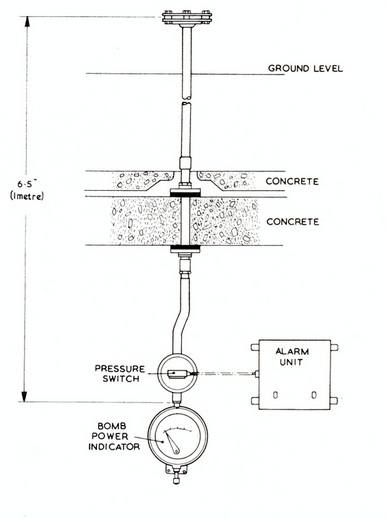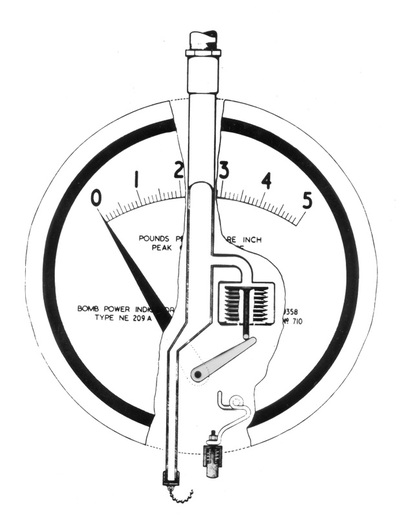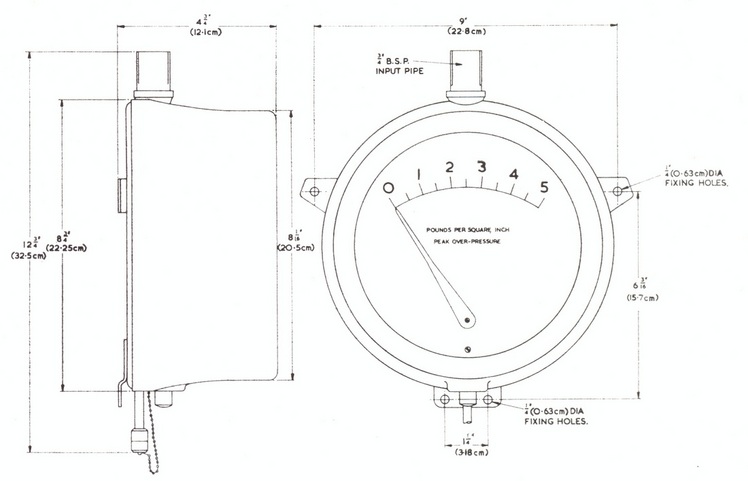BOMB POWER INDICATOR (BPI)
Provided that the distance from ground zero is known, the power of a nuclear weapon can be calculated from the peak over-pressure produced by the blast wave. The Bomb Power Indicator is designed to record this pressure.
External to the monitoring post exists a baffle plate. This baffle plate consists of two metal discs that is screwed onto the top of a pipe that leads down into the underground monitoring post. The over-pressure from a nuclear explosion would be funnelled through the two plates and down the pipe into the monitoring room whereby the over-pressure would be detected on the Bomb Power Indicator (BPI).
The BPI works in the following way:-
The over-pressure from the explosion makes its way down the pipe into the BPI, and is detected by small bellows. One side of the bellows is exposed to normal atmospheric pressure. Attached to the bellows is a push rod which bears against a level fixed to a spindle. When the bellows are expanded, a pointer attached to the spindle moves over a dial reading from either 0 to 5 Pounds per square inch (PSI) or 0 to 50 kilopascals (kPa). The pointer not being actually attached to the bellows, does not return to zero after the passage of the blast wave but is left indicating the peak over-pressure reading. It may then be reset to zero by means of a spring-loaded rod operated by a small push button.
External to the monitoring post exists a baffle plate. This baffle plate consists of two metal discs that is screwed onto the top of a pipe that leads down into the underground monitoring post. The over-pressure from a nuclear explosion would be funnelled through the two plates and down the pipe into the monitoring room whereby the over-pressure would be detected on the Bomb Power Indicator (BPI).
The BPI works in the following way:-
The over-pressure from the explosion makes its way down the pipe into the BPI, and is detected by small bellows. One side of the bellows is exposed to normal atmospheric pressure. Attached to the bellows is a push rod which bears against a level fixed to a spindle. When the bellows are expanded, a pointer attached to the spindle moves over a dial reading from either 0 to 5 Pounds per square inch (PSI) or 0 to 50 kilopascals (kPa). The pointer not being actually attached to the bellows, does not return to zero after the passage of the blast wave but is left indicating the peak over-pressure reading. It may then be reset to zero by means of a spring-loaded rod operated by a small push button.
Left: The baffle plate located on the outside of the monitoring post which directs the peak over-pressure of a nuclear explosion into the down pipe to the Bomb Power Indicator [1]
RIght: The Bomb Power Indicator (BPI) [2]
RIght: The Bomb Power Indicator (BPI) [2]
| Bomb Power Indicator.pdf | |
| File Size: | 2184 kb |
| File Type: | |
Image Sources: [1] ROCA National Archive; [2] 23 Post Museum, Skelmorlie (Top - BPI)
File Source: ROC Journal - December 1968
